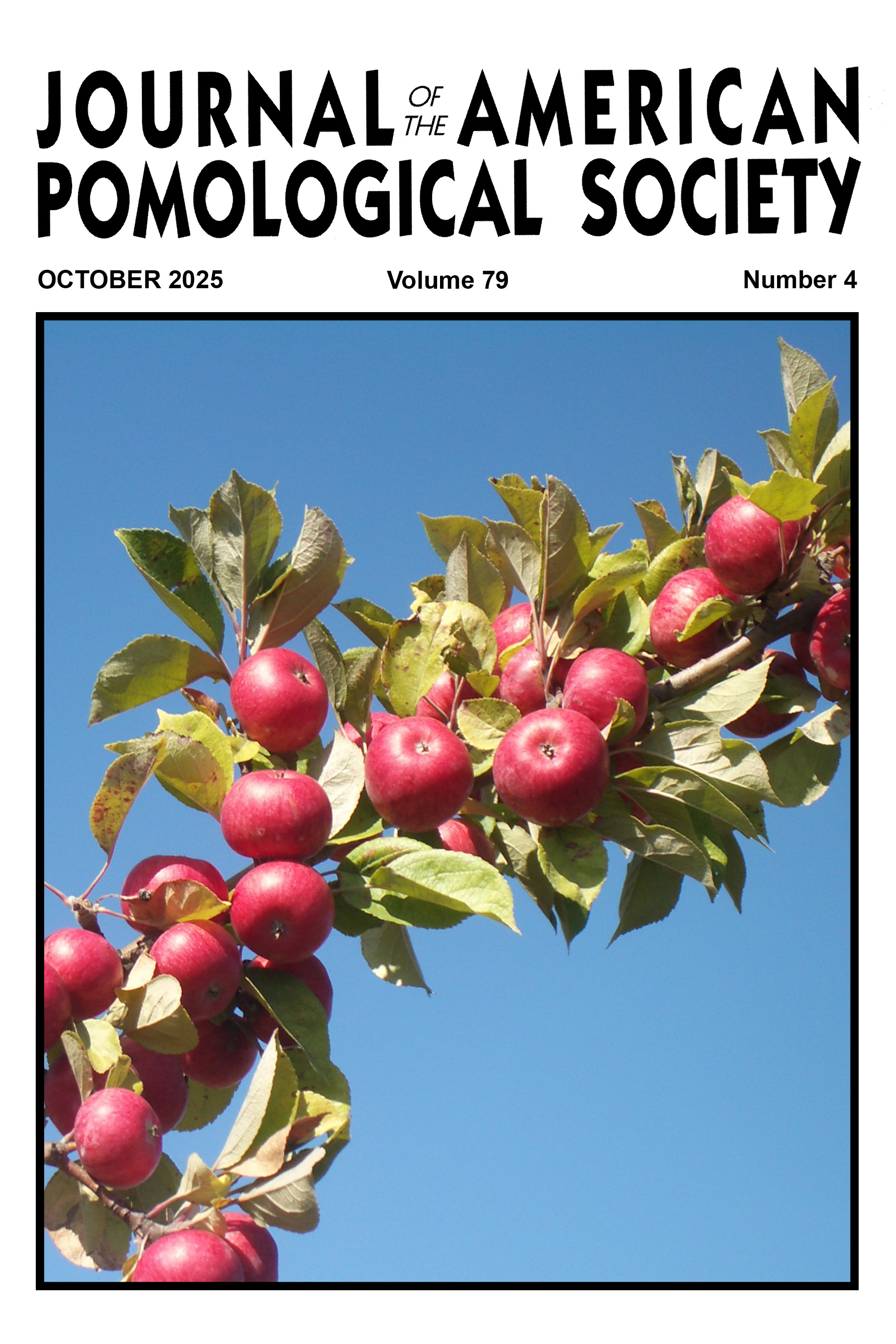Archives
-

Journal of the American Pomological Society
Vol. 79 No. 3 (2025)July 2025, Volume 79, Issue 3
Photo credit: David Karp. All rights reserved.
'Galaxy' Peach
-

Journal of the American Pomological Society
Vol. 79 No. 2 (2025)April 2025, Volume 79, Issue 2
Photo Credit: Alan Cressler, Lady Bird Johnson Wildflower Collection
About the photo: Flowers of Diospyros virginiana (Eastern persimmon).
American persimmons are a woody, deciduous tree in the Ebenaceae family, native to the central and eastern United States. Persimmons are dioecious, meaning that a tree is designated as male or female, and fruit production requires one of each. While trees grown from seed can take as long as 10 years to produce fruit, grafted trees often produce fruit in 3 years. American persimmon trees are hardy and adaptable, thriving in a variety of soils and providing both food and habitat for wildlife such as deer, raccoons, and birds. Historically, Indigenous peoples and early settlers valued the fruit for its nutritional content and used it in breads, puddings, and preserves. Today, the American persimmon is used both as an edible fruit or ornamental tree, providing beautiful orange fruit after leaves have fallen.
-

Journal of the American Pomological Society
Vol. 79 No. 4 (2025)October 2025, Volume 29, Issue 4
Photo Credit: Dr. Carol Miles, Washington State University
About the Image: 'Chisel Jersey' cider apple.
-

Journal of the American Pomological Society
Vol. 79 No. 1 (2025)January 2025, Volume 79, Issue 1
Photo: David Karp, All rights reserved.
About the photo: Pineberries, a 200-year-old cultivar (possibly 'White Pine') grown by Hans De Jongh in the Netherlands, imported and distributed by Frieda's Inc., a specialty produce company based in Los Alamitos 5/2/12. ‘White Pine’ is a synonym for the cultivar properly called ‘White Carolina’ (J.M. Merrick, The Strawberry and Its Culture, 1870, p. 127). For more information on white strawberries, read more from George Darrow here: https://www.pubhort.org/aps/21/v21_n2_a3.htm.
-

Journal of the American Pomological Society
Vol. 78 No. 2 (2024)October 2024, Volume 78, Issue 2
Photos: Eric Stafne, Ph.D. All rights reserved
About the photo:
While the Passiflora family has over 600 known species, only a few are considered to be of commercial quality for fruit production. The primary species is Passiflora edulis, the passionfruit. This species has two varieties, P. edulis var. edulis and P. edulis var. flavicarpa. The former is generally purple in color whereas the latter is yellow. The purple fruit is usually smaller, but sweeter. The yellow fruit is larger but more acidic and is commonly used in juice production rather than fresh consumption. Intraspecific hybrids of these are also popular. Most Passiflora species originate in the tropical regions of Central and South America; however, a few, such as Passiflora incarnata, grow in temperate or subtropical areas. In countries where passionfruit is native or grown widely, consumption is common, with uses including fresh market, juices, dried, and teas. Passionfruit production in the US is small and consumers are generally unfamiliar with the fruit, but interest is growing. Presently, attempts are being made to expand production outside of traditional regions like California, Florida, Hawaii, and Puerto Rico. Identification of cold tolerant selections and incorporation of new interspecific hybrids may lead to new areas of passionfruit within the US and other non-traditional growing regions.

